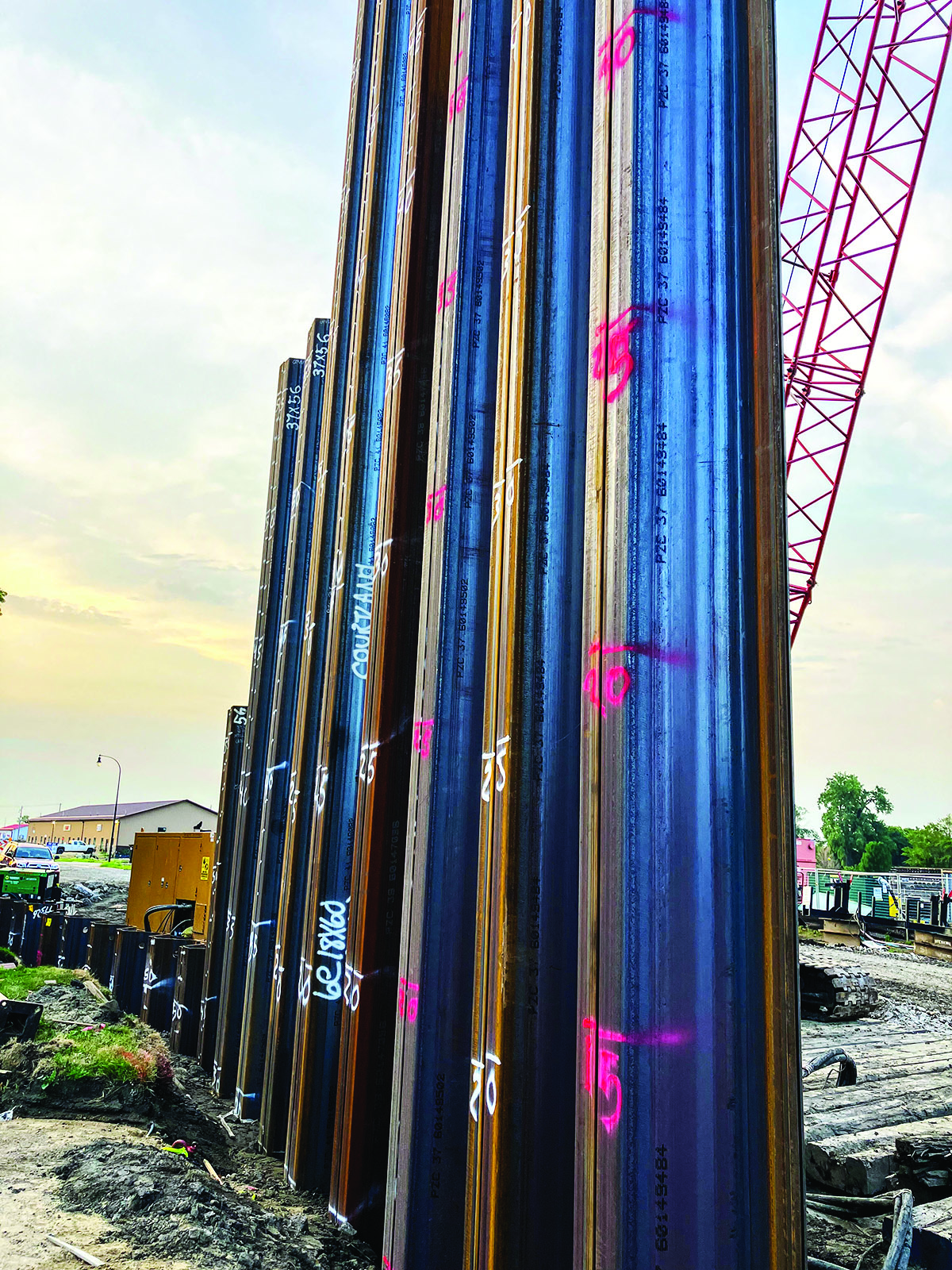
The first of 11 pilings have been driven to a depth of 100 feet to support the railroad overpasses above 11th Street.
Nancy Edmonds Hanson
The first year of heavy construction – earth-moving, pile-driving and laying alternative tracks – is expected to come to a successful conclusion in coming weeks, depending on the weather. But for the largest construction project in Moorhead’s 150-year history, that’s just the opening act.
By the end of 2026, drivers will dip down beneath the BNSF tracks when traveling from north to south on 11th Street. No more long waits for passing trains! For now, though, they must continue to detour around the stretch between First Avenue North and Main … and, next summer, they’ll be taking even more cross-town detours.
According to project manager Aundie Curtiss of the Minnesota Department of Transportation, plans for 2025 will be different from what was announced at the launch of the $120 million-plus project in late 2023. Originally, the east-west roads that flank the railroad’s KO and Hillsboro lines were to be tailored from north to south during the three-year project, starting with First Avenue in this first year, proceeding to Center Avenue in 2025, and finally wrapping up on Main beside the downtown Hornbachers supermarket in 2026.
Instead, MNDoT and Ames Construction have adjusted their plan. Now the stretch of Main from 10th to 12th Streets, the smallest section of the undertaking, will shut down next spring. Meanwhile, First Avenue North will remain closed next summer as the work begun last March is polished off. While they’re blocked off, all east-west travel will be detoured to Center Avenue.
Both roads are expected to open one year from now. That will clear the way for the final stage of the massive project now planned for 2026 – Center Avenue, the byway between the two overpasses on which trains will travel. Motorists will have their choice of taking Main or First, when Center will be blocked off for the final stage of construction.
The change, Curtiss explains, “is contractor-driven. This will work best for staging the project.” She adds, “We’ve had positive reactions from the businesses on Center.”
The engineer observes that the project has gone well this summer, despite heavy rain at the season’s start: “The rain actually was beneficial while we were doing demolition around the site. It kept the dust down.”
Among major accomplishments have been completion of the lift station near the project’s north terminus, a part of the city’s sanitary sewer system, and the BNSF Railway’s construction of shoo-flies, or temporary rails, to shunt mainline train traffic away while work proceeds on the new bridges over 11th.
Ames Construction has installed the first of 11 abutments that will support the railroad bridges. Each involves driving steel beams 100 feet into the earth, causing the ringing “clonk clonk clonk” that’s been heard in recent weeks throughout the city. The piles support the soil as the new roadway is carved out beneath ground level. Curtiss says that pile-driving for the KO line between Main and Center Avenues will continue through Christmas.
“We have been working through some unknown conditions,” the MNDoT engineer concedes. Some are related to soil quality, a challenge first encountered in past years as Ames built the SE Main/20-21st Street underpasses. With the discovery of underground tanks, petroleum and mercury contamination needed to be dealt with. “We’ve worked through all of that with the contractor,” she adds. “Lessons the contractor learned on the previous project have helped us alleviate potential problems.”
MNDoT and Ames have been holding monthly update meetings in the Hjemkomst Center. The next, with more details about firm plans for 2025, is scheduled for February.



